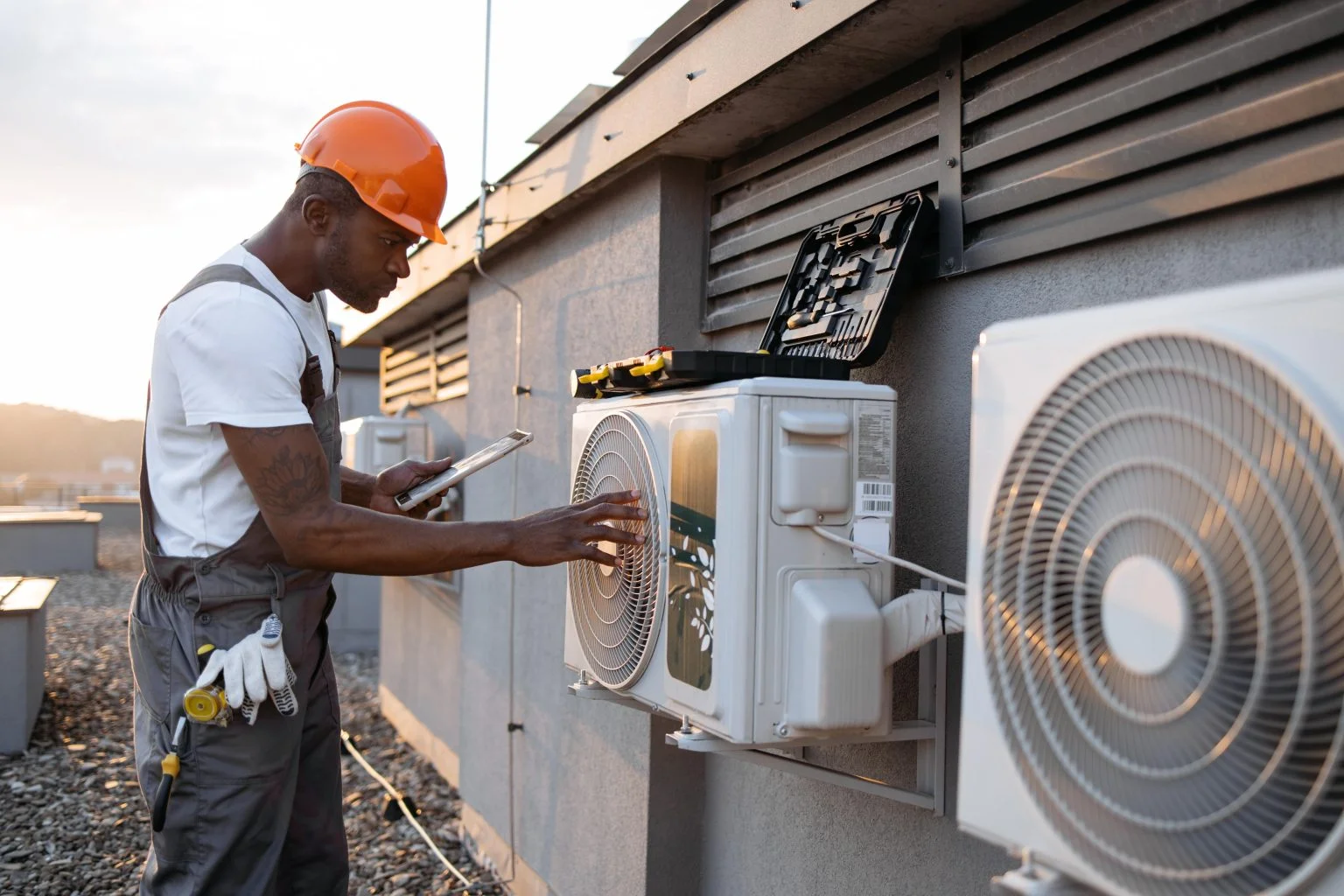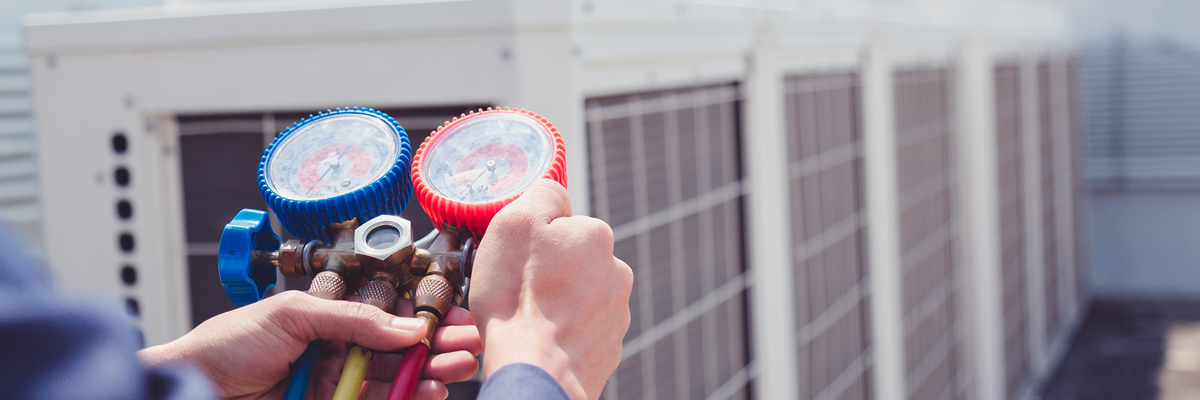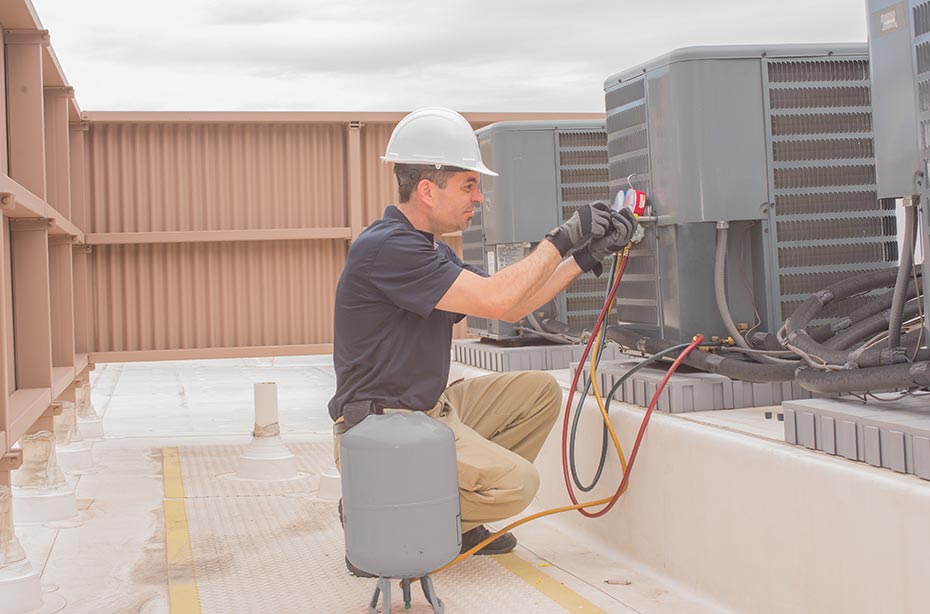Should You Choose ductless mini splits? HVAC Specialist Tips
Should You Choose ductless mini splits? HVAC Specialist Tips
Blog Article
How a Heatpump and Heater Job With Each Other to Optimize Your Home's Heating Performance
Recognizing just how a heat pump and furnace collaborate is essential for property owners seeking efficient heating solutions. Each system has its staminas, supplying a balanced technique to home convenience. The warm pump masters moderate temperature levels, while the heating system delivers fast warmth throughout severe cold. This harmony not just reduces energy expenses however likewise boosts the life-span of both home appliances. What variables influence this collaboration, and exactly how can house owners optimize their advantages?
Understanding Heat Pumps: Just How They Work
Many individuals may be strange with their inner workings, warm pumps play a vital duty in contemporary heating systems. These devices run by transferring warmth from one place to one more, using the concepts of thermodynamics. In cooler months, a heatpump extracts heat from the outdoors air, ground, or water, and transfers it inside your home to heat the living space. On the other hand, during warmer months, it can reverse the process, acting as an ac unit by expelling warm from inside to the outside.Heat pumps include an evaporator, growth, compressor, and condenser valve. The refrigerant within the system absorbs warm as it vaporizes at low temperature levels and stress. The compressor then enhances the pressure and temperature level of the cooling agent, permitting it to release warm as it condenses. This efficient process can significantly decrease energy intake compared to typical home heating approaches, making warmth pumps a sustainable choice for climate control in homes.
The Duty of Heating Systems in Home Heating
Heating systems play a crucial function in home heating by providing a dependable source of heat during the colder months. They operate by generating warmth through burning or electrical resistance, distributing it throughout the home using ducts or radiant systems. The performance of a furnace is commonly measured by its Annual Gas Usage Performance (AFUE) rating, which indicates just how successfully the device transforms gas into heat.Furnaces can use different energy resources, consisting of natural gas, electrical energy, gas, or oil, enabling property owners to select one of the most suitable alternative for their requirements. Unlike heatpump, which may have a hard time in severe cold, furnaces maintain consistent efficiency, guaranteeing that interior temperatures stay comfy no matter of exterior problems. Additionally, modern heaters typically come geared up with sophisticated technology, such as smart thermostats and variable-speed blowers, improving their effectiveness and responsiveness. This versatility makes heating systems an important element in comprehensive home heating methods.

Benefits of Using Both Systems Together
Combining the toughness of both heating systems and heatpump can lead to a more efficient and efficient home heating service. Using both systems allows house owners to take benefit of the warm pump's power efficiency throughout milder temperatures while relying upon the heater for even more severe cold conditions. This double approach can greatly minimize power expenses, as warm pumps eat less electrical power than typical heating techniques when temperature levels are moderate.Additionally, using both systems together can enhance comfort degrees in the home. Heatpump can give constant, even heating, while heaters can rapidly increase ambient temperatures when needed. Additionally, the assimilation of both systems can expand the life expectancy of equipment by decreasing wear and tear on each system, as they share the workload. Eventually, home owners can appreciate a well balanced, economical heating option that adjusts seamlessly to varying weather conditions, making certain a cozy and welcoming home throughout the cold weather.
Exactly How Warmth Pumps and Furnaces Complement Each Various Other
When house owners incorporate warmth pumps and heating systems, they create a corresponding heater that maximizes effectiveness and convenience. Heat pumps run by moving warm from the outdoors air or ground, making them very effective in modest environments. They excel throughout milder temperature levels, giving economical heating. On the other hand, heating systems create warm via burning or electrical resistance, supplying strong, prompt heat throughout severe cool conditions.The combination of these 2 systems enables dynamic changes based on temperature changes. Throughout warmer months or milder winter days, the heat pump can take the lead, saving energy and reducing costs. As temperatures decrease, the heater can perfectly engage, making certain constant warmth throughout the home. This synergy not only optimizes energy use yet also boosts the life expectancy of both systems, as each device operates within its suitable performance variety. With each other, they develop a balanced you could try here environment that adjusts to varying try here environment demands.
Optimizing Effectiveness: Tips for Homeowners
Home owners can improve their heating performance through a number of sensible techniques. Developing a routine upkeep schedule, integrating wise thermostat innovation, and applying efficient insulation and securing remedies are crucial steps. These procedures not only enhance convenience but additionally decrease energy expenses.
Regular Upkeep Schedule
To guarantee maximum heating efficiency, developing a routine upkeep schedule is crucial for any kind of home. Homeowners need to focus on routine examinations of both heatpump and heaters to identify peak performance. This includes transforming air filters every one to 3 months, as blocked filters can substantially lower efficiency. Additionally, organizing professional maintenance at least yearly enables specialists to identify and resolve potential issues before they intensify. Home owners must likewise clean the heatpump's outdoor device to avoid particles accumulation that can impede airflow. By sticking to a normal maintenance routine, homeowners not only enhance their heating unit' effectiveness but additionally prolong their lifespan, resulting in greater convenience and minimized power prices throughout the chillier months.
Smart Thermostat Integration
Incorporating a wise thermostat right into a home furnace can significantly boost power effectiveness, especially as it allows for accurate control over temperature level settings. These tools can discover the house owner's timetable and preferences, instantly changing the temperature to enhance comfort while reducing energy use. For circumstances, they can lower heating during times when the home is vacant, minimizing unneeded intake. Many smart thermostats additionally offer real-time power use data, enabling property owners to make informed choices regarding their home heating practices. In addition, remote access by means of mobile phone apps enables individuals to change settings from anywhere, ensuring the home is warm upon return. Overall, smart thermostat integration not just improves comfort yet significantly adds to energy savings and efficiency.
Insulation and Securing Solutions
Smart thermostats play a crucial function in energy effectiveness, yet their performance can be substantially boosted by correct insulation and securing services. Home owners ought to prioritize protecting attics, walls, and floorings to decrease warmth loss. High-grade insulation materials, such as spray foam or fiberglass, can greatly improve thermal resistance. Furthermore, securing gaps around doors, windows, and air ducts prevents cold air seepage and warmth getaway. Weatherstripping and caulking are reliable techniques for resolving these leaks - heat pump installation ooltewah tn. Regular assessments for air leakages, together with using blower door examinations, can help identify issue locations. By purchasing insulation and securing, homeowners can maximize the performance of their heater, inevitably bring about decreased power consumption and reduced utility expenses
Typical Misconceptions About Warmth Pumps and Furnaces
What misconceptions border heat pumps and furnaces? Lots of individuals incorrectly think that heatpump are inadequate in cooler climates. In truth, contemporary warm pumps are created to run effectively also in reduced temperature levels, giving reliable home heating throughout wintertime. An additional common myth is that furnaces are always a lot more effective than heat pumps. This depends on the specific power sources and effectiveness scores of the devices in concern. Some may additionally think that making use of both systems concurrently is unneeded, yet in fact, this mix can optimize home heating efficiency, particularly throughout extreme climate condition. Furthermore, people commonly think that heat pumps call for consistent maintenance, when in fact, they have similar upkeep requires to traditional furnace. By debunking these myths, homeowners can make even more informed choices concerning their home heating choices, eventually bring about improved convenience and energy efficiency in their homes.
Maintenance Considerations for Combined Solutions

Often Asked Questions
Can Heat Pumps Job Properly in Exceptionally Cold Climates?
Warmth pumps can struggle in very chilly climates due to minimized effectiveness and warmth removal limitations. Nonetheless, improvements in modern technology have actually resulted in designs designed for far better performance in such problems, boosting their feasibility in harsh atmospheres.
For How Long Do Warmth Pumps and Furnaces Usually Last?
Heatpump generally last 15 to 20 years, while heaters have a life-span of 15 to three decades. Routine maintenance can extend their durability, ensuring effective procedure and decreasing the need for premature substitutes.

What Is the Typical Price of Setting Up Both Equipments?
The typical expense of mounting both a heatpump and a heating system normally ranges in between $5,000 to $10,000 - heat pump installation ooltewah tn. Factors influencing this price consist of system size, setup complexity, and regional labor prices
Are There Tax Rewards for Utilizing Energy-Efficient Heating Equipments?
Many home owners ask about tax obligation rewards for energy-efficient heating systems. Various government and state programs frequently use credit reports or refunds, urging the fostering of sustainable modern technologies to lower power intake and advertise environmental responsibility.
Exactly how Do I Select the Right Size Warm Pump and Furnace?
Picking the best size warmth pump and heating system includes determining the home's square footage, taking into consideration insulation high quality, and reviewing local climate. Consulting an expert can guarantee suitable system performance and energy performance based upon specific needs. furnace replacement. Comprehending just how a warm pump and heater job together is crucial for property owners looking for efficient home heating remedies. In cooler months, a warmth pump removes warmth from the outdoors air, ground, or water, and transfers it inside to warm up the living space. When house owners integrate heat pumps and heaters, they create a corresponding heating system that maximizes performance and comfort. Warm pumps run by moving warm from the outside air or ground, making them very reliable in modest environments. Warm pumps can struggle in extremely cold climates due to reduced efficiency and warm extraction limitations
Report this page